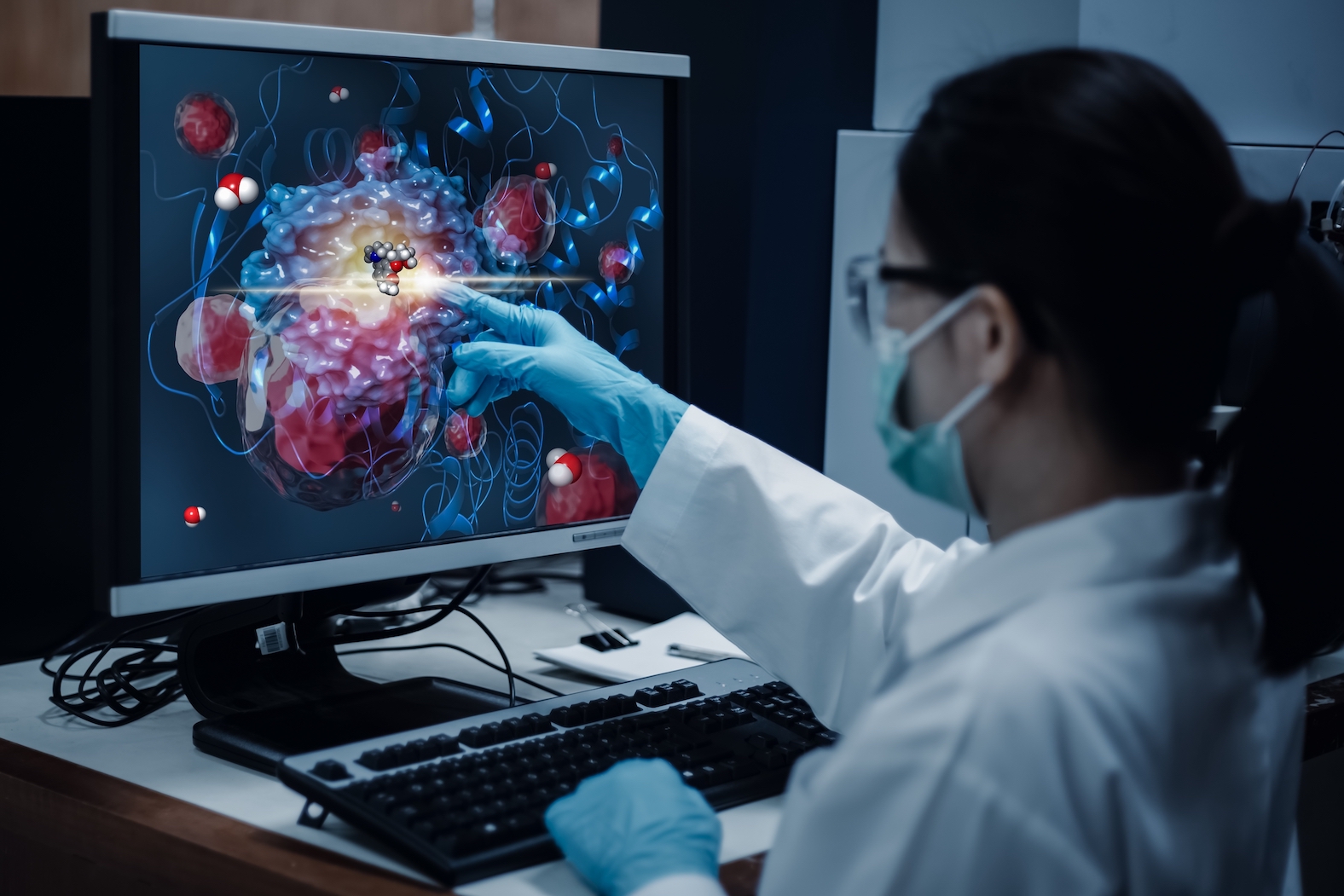Modeling and simulation techniques have revolutionized the field of drug discovery and development, enabling researchers to gain a deeper understanding of the molecular mechanisms underlying disease and the action of potential therapeutics. In particular, these techniques have proven to be invaluable in the development of large molecules such as biologics, proteins, and peptides. By allowing researchers to visualize and manipulate the structure and function of these complex molecules, modeling and simulation techniques can help to optimize their performance and improve their safety and efficacy.
We have several different types of in silico techniques that can be used for large molecules, including molecular dynamics simulations, quantum mechanics calculations, and homology modeling. Each of these techniques has its own strengths and limitations, and the choice of technique will depend on the specific research question being addressed.

Our AI, Modeling & Simulation experts work closely with our clients to understand their unique scientific questions of interest and challenges. We then leverage our expertise in in silico modeling and simulation to provide the correct approach to address our customer requests.

We have extensive expertise in modeling and simulation for a wide range of applications, including pharmaceuticals, API, and process simulations. We are skilled in developing custom models and simulations to meet specific client needs. Our team is committed to staying up-to-date with the latest developments in the field and applying cutting-edge techniques to drive innovation and optimization.
We are skilled in developing custom validated models






















Optimize Drug Formulations
Identify the optimal formulation and dosage forms that leads to improved drug efficacy and patient outcomes

Reduce Cost and Time to Market
Reduce the time and costs associated with clinical trials and drug development

Improve Regulatory Submissions
Help in streamlining the approval process and reduce the risk of regulatory rejection

De-risk
R&D
In silico allows informed decision-making early, de-risking R&D

Enhance Product Lifecycle Management
Identifying opportunities for reformulation or repurposing
Connect with our in silico team of experts to discuss AI solutions and advanced modeling and simulation for the Pharma and Life Science industries and hyper accelerate your success
Our Locations
Copyrights 2024 Ikiminds Pvt Ltd. All Rights Reserved